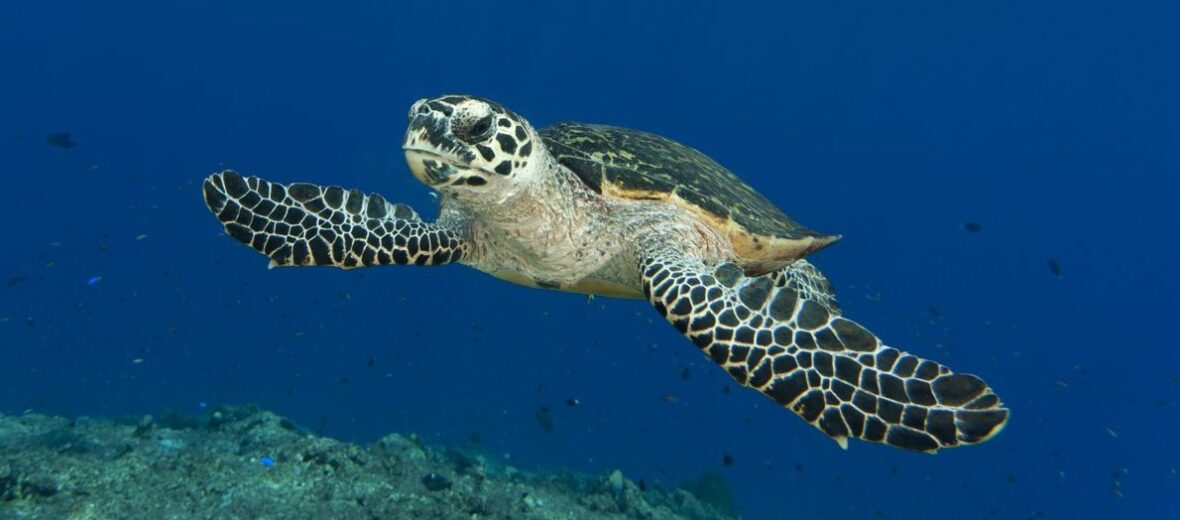
Widely revered as being 1 of the most beautiful of the sea turtle species, the hawksbill sea turtle is also 1 of the smaller species of oceanic turtles. These turtles get their name due to their curved, pointed beak which resembles a hawk’s bill. They are fond of coral reef habitats. Hawksbill turtles can be found in the Atlantic, Indian, and Pacific Oceans. Due to habitat destruction, pollution, human interference, bycatch (getting caught in fishing nets and long lines), and climate change these beautiful creatures are listed as Critically Endangered; and their populations are decreasing.
First the Stats…
Scientific name: Eretmochelys imbricata
Weight: Up to 150+ lbs.
Length: Up to 3 feet
Lifespan: Up to 60 years
Now on to the Facts!
1.) These turtles prey almost exclusively on sea sponges with an occasional invertebrate thrown in, for good measure. They will also consume mollusks and algae too.
2.) More of a shallow water turtle, they can reach depths of up to 60 feet.
3.) Hawksbills are predominantly diurnal (active during the day). This behavior is altered during breeding season, where they are also active at night (nocturnal).
4.) Only the females will return to land, to lay eggs. Males spend their entire lives at sea.
5.) A group of sea turtles is called a bale, dole, creep, nest, or turn.
But wait, there’s more on the hawksbill sea turtle!
6.) The hawksbill turtle is seasonally monogamous (mate with the same female each season).
7.) Female turtles have evolved the ability to crawl over coral reefs to reach secluded nesting sites.
Did you know…?
Their numbers have declined more than 80% in the last century, mainly due to the trade of their amazing carapace (shell), aka “tortoiseshell”. Their beautiful shells are used for frivolous things like combs, jewelry, and other decorative purposes.
8.) The females will nest up to 4 times each season, with 2 week intermissions.
9.) Each nest can contain up to 200 eggs! However, they need to produce a large number of eggs, considering most of the hatchlings won’t live to see adulthood.
10.) Their nests can be located on beaches in around 60 countries.
Now a Short Hawksbill Sea Turtle Video!
Be sure to share & comment below! Also, check out the Critter Science YouTube channel. Videos added frequently!
Want to suggest a critter for me to write about? Let me know here.




Leave a Reply